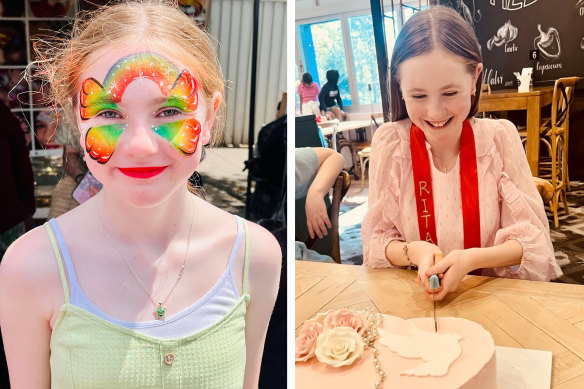Editorial
Charlotte’s heartbreaking final act is a wake-up call to end bullying
School bullying touches most of us during our lifetimes. It crushes some, hardens others and tragically kills, too. Charlotte, a 12-year-old student at Santa Sabina College in Strathfield, left a farewell note citing bullying before apparently taking her own life on Monday, a tragedy that again has focused attention on the repugnant schoolyard culture.
While it is still unclear exactly what happened, any suicide of a child is the worst of losses, leaving parents and school communities bereaved and bereft and wondering what more could have been done as they struggle with distress and grief. Charlotte’s death has gone out like a tsunami across Sydney and raised questions about how schools are handling bullying.

Charlotte, aged 12, died last Monday night. Her family are critical of her school’s response to claims she was bullied.
Experts say the most common risk factors for youth suicide are a mental health condition or a physical disability, but bullying, family problems and grief can also play a role. It is rare for only one factor to be at play.
According to the Herald’s Jordan Baker, last year 936 people in NSW took their own lives, including 23 under the age of 18; nine were girls and 14 were boys. On average, suicide has claimed about 26 minors a year since the NSW Suicide Monitoring System was introduced in 2020. Over the years, Household, Income and Labour Dynamics Australia surveys commissioned by the Department of Social Services have generally found a higher incidence of bullying at public schools, with girls more likely to be the victims.
Rachael Murrihy from The Kidman Centre said many institutions didn’t know how to handle bullying, an observation that suggests the problem is now hitting private schools harder.
Parents of bullies are calling in solicitors to contest allegations, while high-fee independent schools are increasingly hiring lawyers to conduct investigations.
“Right down to the interview, you’re handing this over to a lawyer with potentially no adolescent expertise to handle a traumatic incident,” Murrihy said.
It is easy to understand why some children feel overwhelmed. There are the pressures wrought by parents, siblings and home life, which might be dysfunctional or broken entirely. Family violence, domestic relationship breakdowns and abuse can lead to mental health vulnerabilities in children. Yet similar vulnerabilities can emerge from apparently stable households, or when parents put too much pressure on their children to succeed.
There is also the regime of school, which can be perplexing, loud and exhausting. There are small friendships that dissipate without reason, endless interactions that come to nothing, and hopes that are dashed every day. And while anti-bullying strategies in schools are gaining traction, much good work in the playground can be undermined by nastiness on social media and phone text messages.
Bullying, long a pernicious problem robbing many children of their happiness and potential, this week was one of the antagonists in Charlotte’s tragedy. Children should not endure such destruction. All NSW schools and the government must redouble efforts to tackle schoolyard bullying and promote safety and resilience. We now know it can be achieved. Innocent young lives are at stake.
Support is available through Kids Helpline on 1800 55 1800, Beyond Blue on 1300 224 636, Lifeline on 13 11 14, Sane on 1800 187 263, and Dolly’s Dream on 0488 881 033.
Start the day with a summary of the day’s most important and interesting stories, analysis and insights. Sign up for our Morning Edition newsletter.